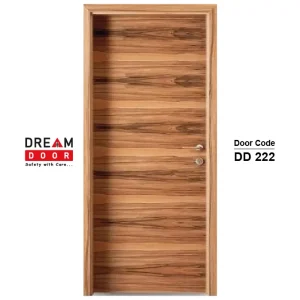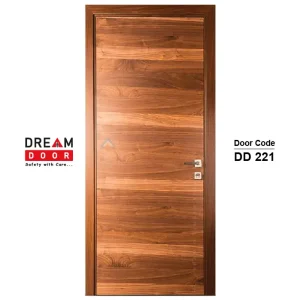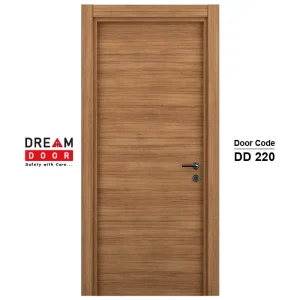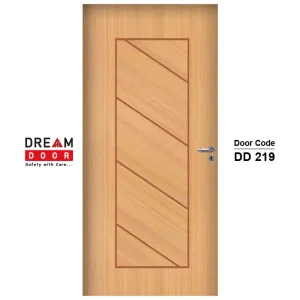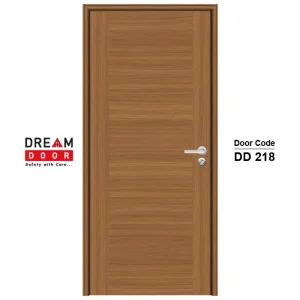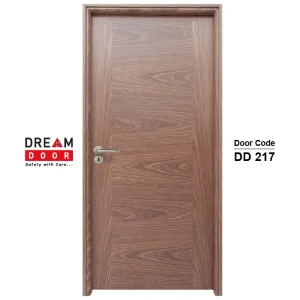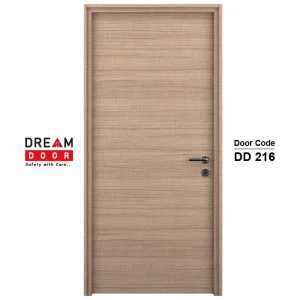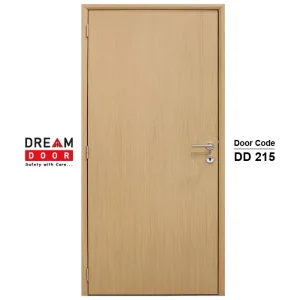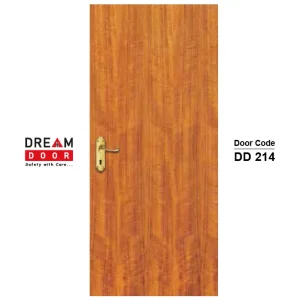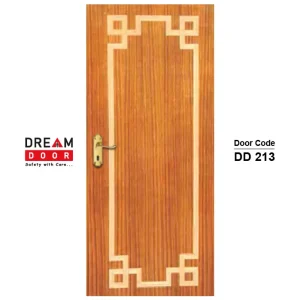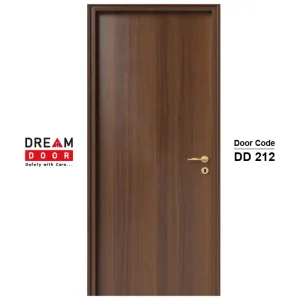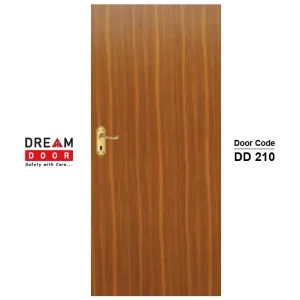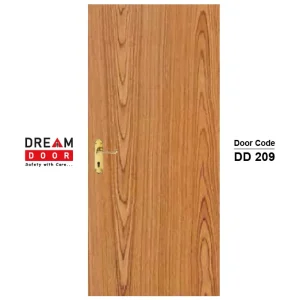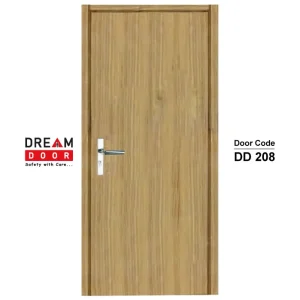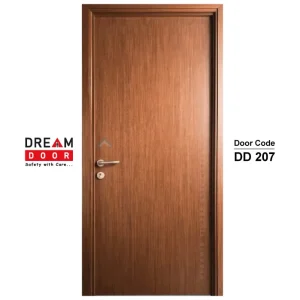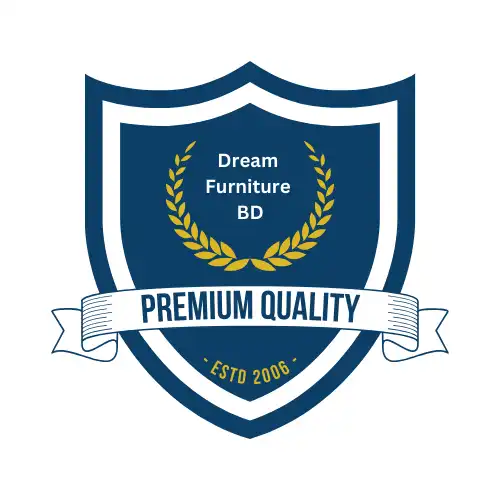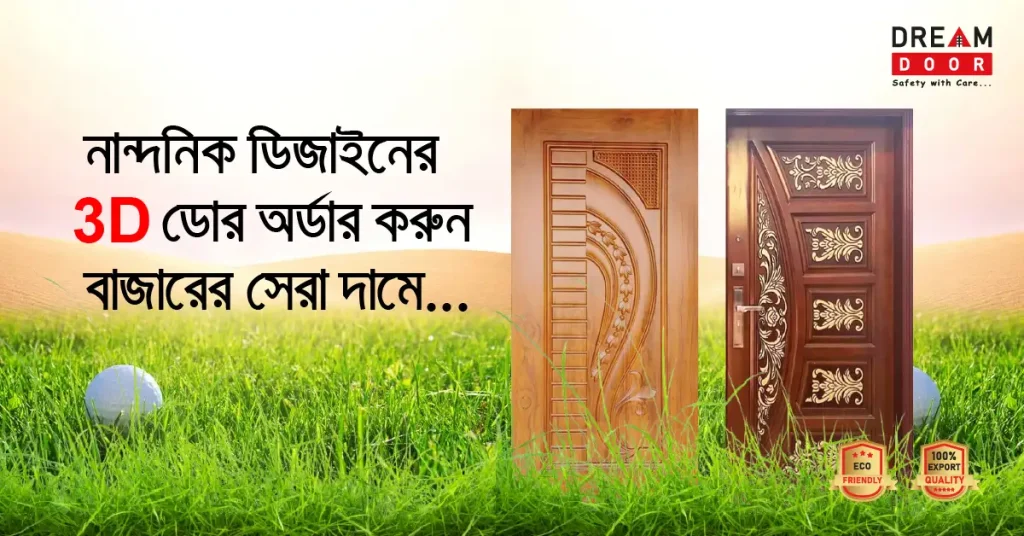2D Wooden Door – Design Guide, CAD Blocks & Digital Drawing Resources
Looking for a clear 2D wooden door design for your next project? Whether you’re an architect, furniture maker, or homeowner in Bangladesh, 2D wooden doors help you visualize and plan with ease. I’ve used these drawings in many home design projects right here in Dhaka—they’re great for getting accurate door measurements, CAD layouts, and elevation views. From modern to classic styles, a wooden door 2D model saves time and ensures smooth communication with your carpenter or builder. It’s the smart way to plan doors before buying or customizing!
— Written By
LN. Salauddin Manik
CEO of Dream Furniture BD & Dream Touch Architects Ltd.

What is a 2D Wooden Door Design?
Basic Definition and Visual Representation
What is a 2D wooden door design, and how does it look?
A 2D wooden door design is a flat, top-down, or front-facing drawing that shows the shape, size, and structure of a wooden door. It's usually created using CAD software like AutoCAD and used in home design, carpentry, or architecture projects.
Think of it like a bird's-eye view or side sketch of your door—nothing fancy or 3D, just clean lines that show where your hinges, handles, and door frames go. In Bangladesh, most local carpenters and architects still prefer 2D wooden door drawings because they're easy to understand and quick to follow.
I remember one of our clients in Mohammadpur who showed us a rough idea scribbled on a paper. We converted it into a proper wooden door 2D model, and it helped him get approval from his contractor within a day. That's the beauty of simple drawings—they save time, cost, and confusion.
Flat Wooden Door Design vs. 3D Models
How is a flat 2D wooden door different from a 3D one?
A 2D wooden door is like a blueprint. It shows height, width, and position, but doesn't give depth or textures. On the other hand, 3D door models show realistic looks and how the door fits in a space.
Here's a quick breakdown:
- 2D Door Designs: Easier to edit, lighter files, perfect for planning.
- 3D Models: Better for visualizing finishes, materials, and final look.
In my experience designing for small apartments in Dhaka, 2D works best for technical teams, while 3D is more for client presentation.
Uses in Architectural Drafting & Construction
Where do we use 2D wooden doors in architecture?
In Bangladesh, 2D wooden door drawings are still the backbone of most residential and commercial construction drawings. You'll find them in:
- Architectural floor plans
- Elevation views
- Construction documentation
- Door schedules
Even when using Revit or SketchUp, we always start with a 2D timber door drawing for dimensioning. It's the easiest way to avoid misalignment during fitting.
Benefits of 2D Wooden Doors in Planning
Why are 2D wooden door designs helpful during planning?
They help avoid guesswork. A wooden door 2D model shows exactly where things go—no surprises for your builder or carpenter. It also saves money during site work.
Once, while working on a duplex in Savar, we used a 2D door plan view to calculate the swing space and avoid collision with wardrobes. That saved the client a costly fix!
Floor Plan Symbols and Door Elevation Uses
What do 2D symbols and elevations show in door design?
2D symbols tell you how a door swings, its opening width, and which side the handle goes. Door elevation drawings show what the door will look like from the front—perfect for choosing paneled or carved styles.
If you've ever seen a floor plan with a curved line beside a rectangle—that's the door swing! It's a small thing, but super useful during carpentry.
Why Designers Still Rely on 2D Door Drawings
Why is 2D still popular even with modern 3D design tools?
Because it's simple, lightweight, and works everywhere. 2D wooden doors are still used in approval drawings, tender documents, and shop floor printing in most Bangladeshi firms.
Even after 19 years in design, I still start every project with a 2D sketch. It helps everyone—from junior draftsmen to head carpenters—stay on the same page.
Quick FAQs – 2D Wooden Door Design
Q: Can I use 2D door designs for furniture manufacturing?
Yes! Most carpenters in Bangladesh prefer 2D designs for CNC cutting and local joinery.
Q: Do 2D wooden doors work in software like AutoCAD or SketchUp?
Absolutely. They're usually saved as DWG, DXF, or SVG files that are compatible with all major platforms.
Q: How do I know which door type to use—flush, paneled, or sliding?
It depends on your space. Flush for modern, paneled for classic, sliding for tight spaces.
Common Types of 2D Wooden Doors
By Structure and Operation
How are 2D wooden doors classified by their structure?
2D wooden doors can be single, double, sliding, or folding—each shown differently in 2D CAD drawings. The design depends on how the door opens and how much space you have.
Let me walk you through the types I've used in real homes across Dhaka and Chattogram.
Single Wooden Door 2D vs. Double Wooden Door 2D
What's the difference between single and double 2D wooden door drawings?
A single wooden door 2D drawing shows one leaf, perfect for rooms and kitchens. A double wooden door 2D has two symmetrical leaves, ideal for entrances and wide openings.
I used a single flush door 2D layout for a studio in Dhanmondi—it saved wall space. But for a luxury duplex in Gulshan, a double-paneled wooden door in 2D looked grand and welcoming.
Quick Tip:
- Use single doors for internal rooms.
- Use double doors for main gates or formal entryways.
Sliding, Pocket & Bifold Wooden Door 2D Models
How do sliding and folding wooden doors appear in 2D models?
These doors show overlapping panels or directional arrows in 2D. A sliding wooden door 2D glides along the wall, while pocket doors slide into it. Bifold doors fold like an accordion.
In small apartments around Bashundhara, I've often used sliding 2D wooden door designs for balconies and wardrobes. It's space-saving and very modern.
French, Barn & Louvered Door Drawings
How do French, barn, and louvered doors show up in 2D wooden door drawings?
French doors feature glass panel layouts in elevation. Barn doors slide over the wall and show visible rollers. Louvered doors use slats—shown with thin angled lines in 2D CAD.
These styles are rare in rural Bangladesh but are gaining popularity in cafes and boutique homes in Dhaka. I once designed a barn-style bathroom door in Uttara—it looked rustic and stylish.
Mini FAQ – Operation Types
Q: Are sliding wooden doors better for small spaces in Dhaka?
Yes! Sliding 2D doors save space and avoid swing clearance—great for tight corners.
Q: Can I use double doors in a flat?
Yes, but mostly for main entrances or larger interiors. Make sure to check the swing clearance in your 2D model.
By Style and Material
What door styles and materials are used in 2D wooden door designs?
From modern to vintage, door style matters. The material—solid, hollow, or engineered wood—affects the door's look and durability.
Each type can be clearly represented in a 2D wooden door model through patterns and line weights.
Modern, Rustic & Traditional Wooden Door 2D
What 2D wooden door styles work for Bangladeshi homes?
Modern 2D wooden doors are plain, clean-lined, and often flush. Rustic doors have bold wood textures. Traditional ones show carved panels or arch shapes in elevation.
I designed a traditional paneled wooden door 2D for a home in Rajshahi using floral motifs—it matched the vintage furniture perfectly.
Solid Wood, Hollow Core, and Engineered Designs
Which wood materials show up in 2D drawings?
The door type—like solid wood, hollow core, or engineered wood—won't look different in shape, but 2D symbols and annotations mark the material clearly.
Solid wood is heavier and more durable, ideal for exterior wooden door 2D models. Hollow core is cheaper—good for bedrooms or rental units.
Mini FAQ – Style & Material
Q: How do I show carved patterns in 2D?
Use elevation lines and symbols. For CNC, add a DXF carving pattern alongside the 2D drawing.
Q: Is engineered wood suitable for exterior doors?
Yes, if it's moisture-sealed. Mark weatherproofing details in your 2D wooden door model.
By Functionality
What functions can 2D wooden doors serve?
Some doors are built for fire resistance, noise control, or security. These features are noted in the door specifications attached to the 2D drawing.
Function-first designs are critical in urban homes, offices, or hotels in Bangladesh.
Fire-rated, Soundproof, and Security 2D Wooden Doors
How are fire or soundproof doors shown in 2D models?
These use specific symbols and labels in the CAD file. Fire-rated wooden doors 2D models often include wall section details, too.
At Dream Door, we once created a fire-rated double wooden door 2D design for a garment factory in Gazipur, marked with special codes and core materials.
Weatherproof & ADA Compliant Wooden Door CADs
Are there 2D designs for weatherproof or ADA doors?
Yes! Weather-stripped 2D wooden doors show seals in section views. ADA-compliant doors in 2D mark clearances and swing arcs for wheelchair access.
In hospitals and schools across Bangladesh, we ensure ADA spacing is included in all 2D drawings. It's not just about design—it's about safety.
Quick FAQ – Functional Doors
Q: Can I design a soundproof wooden door using 2D only?
Yes. Include the material layer and seal type in the notes beside your 2D door elevation.
Q: How do I show fire-rating in a CAD file?
Use industry standard symbols like "FD30" or "FD60" and include details in the section view or specification chart.
H2: Essential Components in 2D Wooden Door Drawings
Structural Elements & Hardware Details
What structural parts and hardware are shown in 2D wooden door drawings?
2D wooden door drawings usually include the door frame, jamb, sill, hinges, and handles—all essential for accurate design and fitting. These help builders understand exactly how the door should open and fit into the wall.
When I design for Dream Door clients in Dhaka, even the most basic 2D wooden door model shows the door swing, clearance space, and hinge positions. Without these, installers often end up guessing—and that's where mistakes happen.
Door Jambs, Sills, and Frame Dimensions
How are jambs, sills, and frames shown in 2D designs?
In 2D, door jambs are the vertical sides of the frame, while sills are the bottom supports. These are drawn as rectangles or lines around the door leaf, and sizes are added in millimeters.
For example, a standard internal door frame in Bangladesh is usually 100–125mm thick. I always include frame dimension annotations in my drawings so local carpenters can cut timber with confidence.
Hinges, Handles, Knobs, and Door Accessories
Are hinges and handles shown in 2D wooden door models?
Yes. We show hinges as dashed lines or symbols, and handles or knobs are marked on the latch side. These accessories help define the door's function—swing, lock, or push.
During a project in Mirpur, I forgot to mark hinge positions on a flush wooden door 2D file. The installer drilled the wrong side. From then on, I always double-check accessories in the drawing!
Mini FAQ – Hardware Components
Q: How many hinges should I show on a standard wooden door in 2D?
For 7ft doors in Bangladesh, three hinges are typical—top, middle, and bottom.
Q: Can I show automatic closers or stoppers in 2D?
Yes, just mark them with standard architectural symbols or side notes.
Material and Finish Specifications
How do 2D wooden door drawings represent materials and finishes?
While 2D drawings are flat, they often include notes and hatch patterns to describe textures, grains, or finishes like stains and varnish.
These notes help communicate the design intent to the carpenter, even without a 3D render.
Door Leaf, Textures, Grain Patterns & Paint Options
What can we show about the door surface in 2D?
We represent the door leaf with clean lines and add surface info as text, like "Teak wood grain, vertical" or "Glossy white paint."
In Khulna, a client once asked for "matt finish with horizontal grain." We added that directly to the 2D door elevation, and the carpenter matched it perfectly from local timber stock.
Stains, Varnishes, and Weather-Sealed Components
How do we show stains or weatherproofing in 2D files?
Use standard notes or shading patterns. For weather-sealed exterior wooden door 2D drawings, I label areas like "sealed joint" or "PU varnish for rain protection."
In Bangladeshi weather, especially in coastal zones like Barisal, weatherproofing notes are a must. Otherwise, wood doors swell during the monsoon.
Mini FAQ – Finishes & Materials
Q: Can I show textured or carved designs in 2D?
Yes, using hatch lines and elevation views. You can also attach a reference image or DXF pattern.
Q: How do I show a varnished finish?
Add a text note like "Mahogany, semi-gloss varnish" beside the door elevation.
Size Standards and Customization
How are door sizes managed in 2D wooden door models?
We use dimension lines and labeled widths/heights to show door size. Common sizes are used for bedrooms, kitchens, and entrances across Bangladesh.
You can also easily adjust these sizes in CAD software for custom needs.
Standard Door Sizes vs. Custom Door Sizes
What are the standard sizes for wooden doors in Bangladesh?
Most interior doors are 30–36 inches wide and 78–84 inches high. Main entrances use double doors, around 60–72 inches wide.
I keep a template of these standard sizes in my CAD library to save time during drafting. For custom homes or luxury projects, we often go beyond standard—just make sure your 2D model reflects exact frame-to-frame measurements.
How to Draft Accurate 2D Door Dimensions
What's the right way to mark door sizes in 2D drawings?
Use clear dimension lines for height, width, and thickness. Also mark door swing, frame thickness, and hardware positions.
A small mistake—like missing frame width—can delay projects. At Dream Door, we always double-check door clearances and hinge positions in every 2D model before printing.
Mini FAQ – Door Sizes & Drafting
Q: How do I adjust a 2D wooden door for a custom size?
Simply change the dimension values in your CAD file and ensure the frame adjusts too.
Q: Should I show the door swing in all 2D drawings?
Yes! It's crucial for space planning, especially in tight apartments or offices.
Software & File Formats for 2D Wooden Door Models
Most Commonly Used Software
Which software is best for drawing 2D wooden doors?
The most popular tools are AutoCAD, Revit, and SketchUp. These platforms support clean 2D drafting, offer large CAD libraries, and are widely used by architects in Bangladesh.
In my own studio, we mostly use AutoCAD for door layouts and Revit when working on full architectural projects. For freelance designers or students, SketchUp with 2D plugins works well too—it's easier to learn.
AutoCAD, Revit, SketchUp, and Other CAD Platforms
How do these tools handle 2D wooden door designs?
- AutoCAD: Perfect for precise 2D door drawings. Supports DWG and DXF formats.
- Revit: Best for BIM-based design. You can use Revit families to place wooden doors easily.
- SketchUp: Great for 3D and 2D layouts using components. Compatible with many plugins.
- Other tools: Free tools like DraftSight and LibreCAD also support wooden door 2D models for smaller projects.
I've trained many junior designers across Dhaka who now use Revit for full house modeling, but still return to AutoCAD for detailed 2D wooden door layouts—especially when speed matters.
Software Compatibility for Designers and Architects
Are these software options compatible with each other?
Mostly yes. You can export and import files like DWG, DXF, and SVG across AutoCAD, Revit, and SketchUp. Just make sure the scaling and line types stay consistent during conversion.
I once had a file compatibility issue between AutoCAD and SketchUp for a restaurant project in Banani—the door swings didn't show properly. Since then, I have always double-checked door CAD blocks after importing across platforms.
Mini FAQ – Software Tools
Q: Can I use 2D wooden door CAD blocks in SketchUp?
Yes. Just import DXF or DWG files and use them as components.
Q: Is Revit too advanced for a simple 2D door design?
Revit is powerful, but yes, for simple 2D doors, AutoCAD is faster and easier.
Downloadable File Types and Digital Assets
What file formats are used for 2D wooden door designs?
The main formats are DWG, DXF, SVG, and PDF. These are easy to share, edit, or print, and they work with almost all design tools.
For example, I send PDF files to clients for approval and DWG files to the carpenters for CNC cutting. This system works well even for local workshops in Gazipur or Narayanganj.
DWG, DXF, SVG, PDF Formats Explained
What does each file format do?
- DWG: Native to AutoCAD. Ideal for editing and sharing 2D drawings.
- DXF: More universal. Works across many software, perfect for CNC machines.
- SVG: Vector graphics. Often used for carving patterns or digital presentations.
- PDF: Good for non-editable viewing or printing of 2D wooden door designs.
At Dream Door, we usually deliver a full package: DWG for engineers, DXF for CNC, and PDF for client confirmation.
How to Access Free or Paid Wooden Door CAD Blocks
Where can I download 2D wooden door blocks?
You can find free and premium wooden door 2D CAD blocks online. Popular sources include Autodesk library, DWGmodels.com, BIMobject, and even local Facebook design groups in Bangladesh.
Some files are paid, starting from BDT 200 to BDT 1,000, depending on complexity. I've even built my own CAD block library over 19 years, and I often reuse them for new residential projects across Dhaka and Sylhet.
Mini FAQ – File Formats & Downloads
Q: Which file should I send to a carpenter in Bangladesh?
Send a PDF or printed A4 layout for simple jobs. For CNC or laser cutting, send a DXF.
Q: Can I edit free CAD blocks from online sites?
Yes. Just import them into AutoCAD or SketchUp and adjust as needed.
Where to Use 2D Wooden Door Designs
2D wooden door designs are versatile and fit in many places—from cozy Bangladeshi homes to bustling offices. Knowing where to use them helps make your project smooth and clear.
Residential Applications
Where are 2D wooden doors mostly used in homes?
They're commonly used in bedrooms, bathrooms, kitchens, and main entrances. Each space needs a specific door type and design, shown clearly in a 2D wooden door drawing.
For example, I recently helped a family in Dhaka plan interior doors using interior wooden doors 2D models. We chose sliding doors for bathrooms to save space and paneled doors for bedrooms to keep things cozy.
Bedroom, Bathroom, Kitchen, and Main Door Designs
How do 2D wooden doors differ by room?
- Bedrooms usually have solid or hollow core wooden doors in 2D, often with soundproofing.
- Bathrooms need moisture-resistant finishes and sometimes sliding doors, shown clearly in 2D CAD blocks.
- Kitchens often use flush doors with durable finishes.
- Main doors are larger, sometimes double-leaf, and detailed in 2D for security and style.
I recall a project in Sylhet where we designed a weatherproof exterior wooden door 2D for the main gate. It helped the builders avoid last-minute changes during the monsoon.
Space Planning and Interior Fit-Outs
How do 2D wooden door designs help with space planning?
They show exact door swings, clearances, and frame sizes so architects can plan furniture and walkways properly.
In cramped Dhaka apartments, this is a lifesaver. One client's bedroom door used to bump into the wardrobe until we reworked the 2D wooden door swing. Problem solved without costly remodeling!
Mini FAQ – Residential Uses
Q: Can 2D door drawings help reduce space problems in small homes?
Absolutely! They let you plan door swings and avoid clashes with furniture.
Q: Are sliding doors common in Bangladeshi kitchens?
Yes, especially in compact flats where space is tight.
Commercial and Industrial Uses
Where are 2D wooden doors used outside homes?
In offices, shops, hotels, and factories, 2D wooden door drawings help with uniform design and construction.
At Dream Door, we've designed office doors for Dhaka's tech parks and retail shop entrances in Gulshan using detailed 2D wooden door CAD blocks.
Office, Retail, and Hospitality Door Designs
What door types are common in commercial spaces?
Offices often use fire-rated or soundproof wooden doors—shown in 2D with specs. Retail stores like to use stylish paneled or glass-paneled doors. Hotels often prefer sliding or French wooden doors for balconies and suites.
I worked on a boutique hotel near Banani where we designed elegant French wooden door 2D models for room balconies. The 2D designs helped get quick approval from management.
Role in Construction Documentation & Blueprints
Why are 2D wooden doors important in blueprints?
They are the official reference for carpenters, contractors, and inspectors. 2D drawings ensure doors fit regulations and specs like fire safety or ADA compliance.
For example, during a garment factory build in Narayanganj, our detailed 2D wooden door drawings sped up approvals from building authorities.
Mini FAQ – Commercial Uses
Q: Are fire-rated doors shown in 2D drawings?
Yes, fire ratings are marked clearly in 2D door elevations and specs.
Q: Can 2D drawings help with building permits in Bangladesh?
Definitely, clear door details reduce approval delays.
Expert Advice on Choosing & Using 2D Wooden Door Designs
With nearly two decades in door design, I've learned that 2D wooden doors remain essential, even in today's high-tech world. Here's why, plus some real insights from my work with Dream Door.
Insights from LN. Salauddin Manik – 19 Years in Door Design
Why do 2D wooden doors still matter in a digital age?
Despite advances in 3D modeling, 2D wooden door drawings are simple, clear, and reliable. They're a universal language between architects, carpenters, and builders, especially in Bangladesh, where practical, easy-to-use plans matter most.
Back in 2008, when I started at Dream Door, we mainly relied on 2D CAD blocks. Even now, during site visits in Mohammadpur, I see that most craftsmen prefer printed 2D door layouts—they're easier to measure and follow on-site.
Real Project Examples from Dream Door, Since 2006
Can you share some real-life examples?
Sure! One project involved a luxury home in Dhaka where we used detailed 2D wooden door plans for every room. The precision helped local carpenters craft doors with minimal waste, saving money and time.
In another case, a boutique hotel near Cox's Bazar used 2D French door drawings for balconies. The drawings ensured smooth coordination between architects and local suppliers who weren't familiar with 3D tools.
Mini FAQ – Expert Experience
Q: Is 2D design enough for complex door projects?
Yes, for most wooden doors, especially in Bangladesh. 2D drawings provide clear details without overwhelming.
Q: How do you handle on-site changes?
We keep editable 2D CAD files handy to adjust quickly during site visits.
Design Considerations from Dream Touch Architects Ltd.
How do you match door types with building function?
We choose door styles based on use—interior wooden doors for privacy, fire-rated doors for safety, and weatherproof doors for exteriors. Each is carefully drafted in 2D to match exact specifications.
For example, at a corporate office project in Gulshan, we combined soundproof wooden door 2D models with fire-rated specifications to meet building codes.
Sustainability, Durability, and Aesthetic Goals
What design tips ensure durability and beauty?
Using engineered wood or treated timber can extend door life, especially in humid Bangladeshi climates. We always include these material notes in 2D drawings so builders know what to expect.
A client from Chittagong once asked for rustic-style doors but worried about weather damage. We suggested a durable finish and detailed this in the 2D plans, which kept the doors stunning for years.
Mini FAQ – Design Considerations
Q: Can 2D plans specify sustainable materials?
Absolutely. Notes and labels clearly indicate eco-friendly wood types or finishes.
Q: How do you balance looks and function?
By integrating client tastes with practical design, it is always shown in the 2D door layout.
Conclusion
If you're a homeowner, architect, or builder in Bangladesh looking for clear, reliable door plans, a 2D wooden door design is a great place to start. It works perfectly for most homes and commercial spaces where simple, precise details matter most. But if you need ultra-realistic visuals or complex custom features, you might want to explore 3D models too.
From my experience working on projects across Dhaka and beyond, 2D wooden door drawings save time and reduce mistakes, especially when local carpenters prefer printed plans. So, whether you're designing a cozy bedroom door or a grand entrance, these 2D designs keep things smooth and straightforward.
In short, 2D wooden door plans give you practical, easy-to-understand layouts that fit Bangladesh's building styles and budgets. If you want quick, accurate door designs that everyone can use, this is the way to go.
A Complete Look at All Dream Door Designs
Need 2D Doors – Contact Us Today

Why Choose Us
- Crafted from premium, eco-friendly solid wooden materials — chemically treated for enhanced durability and longevity.
- Custom door designs are available to match your home’s interior style and aesthetic perfectly.
- Trusted door manufacturer with over 19 years of industry experience and proven craftsmanship.
- Backed by a 20-year warranty, ensuring product reliability and peace of mind.
- Doors are made by skilled door makers who prioritize both security and design precision.
- Free delivery and professional installation service included (terms and conditions apply).
- Committed to sustainable manufacturing practices for an eco-conscious living environment.

Meet LN. Salauddin Manik
CEO, Dream Furniture BD
I’m LN. Salauddin Manik, CEO of Dream Furniture BD and Dream Touch Architects Ltd., has 19 years of hands-on experience in premium door design in Bangladesh. I hold a furniture design certificate from MassArt and certifications from DCCI and DIPTI. At Dream Door, we specialize in high-quality 2D wooden door designs that support precise planning for both homes and commercial projects. From single to double doors, our 2D models ensure accurate dimensions, smooth installation, and aesthetic balance. If you’re planning a home in Dhaka or anywhere in Bangladesh, our expert-crafted 2D wooden door drawings can help you build smarter and faster.
Our Satisfied Customer Reviews
Mahmud Hasan
21 Oct 2023 | FacebookDream Door’s solid wooden door build and smooth matte finish really impressed me.
⭐️⭐️⭐️⭐️⭐️
Nusrat Jahan
21 Oct 2023 | FacebookI chose their melamine interior door for my office—it’s stylish, durable, and easy to clean.
⭐️⭐️⭐️⭐️⭐️
Dilruba Jahan
25 Oct 2023 | FacebookThe price is reasonable for the premium quality wooden door you get. I installed it in my parents’ house—they loved the elegant look and build.
⭐️⭐️⭐️⭐️⭐️
Baker Khan
22 Oct 2024 | GoogleI was worried about door fitting, but Dream Door got the custom measurements just right. Excellent service and professional installation..
⭐️⭐️⭐️⭐️⭐️
Murad Hasan
21 Oct 2023 | FacebookMy flat renovation went smoothly thanks to their team. The modern door design looks fantastic and the structure feels sturdy and secure.
⭐️⭐️⭐️⭐️⭐️
Kabir Khan
11 Oct 2023 | GoogleOrdered a customized wooden door for our prayer room. It came exactly as requested, with a beautiful carved finish and peaceful vibe.
⭐️⭐️⭐️⭐️⭐️
Kalam Ahmed
21 Dec 2023 | FacebookThis is my second time using Dream Door. Their consistent quality, timely delivery, and smooth operation keep me coming back.
⭐️⭐️⭐️⭐️⭐️
Bacchu Miah
18 Jul 2022 | GoogleI love the smooth matte finish and the unique door color I picked. It's now the highlight of my hallway design!
⭐️⭐️⭐️⭐️⭐️
Md. Faruk Hossain
21 Oct 2023 | FacebookAs an interior designer, I recommend Dream Door often. Their custom door designs always elevate the space!
⭐️⭐️⭐️⭐️⭐️
Sadia Afrin
25 Oct 2023 | FacebookFrom order to installation, everything was on time. Plus, the door matched my home decor perfectly.
⭐️⭐️⭐️⭐️⭐️
Special Offer Price: ৳ 4800 TK. Premium Mahogany Door
Trusted by Leading Brands








Our Client Testimonial
Latest in Doors – Designs, Materials & More
Get Expert Advice on 2D Door Selection
Frequently Asked Questions (FAQs)
This content was created by LN. Salauddin Manik, CEO of Dream Touch Architects Ltd. and Dream Furniture BD, with 19 years' experience in door design. It aims to guide Bangladeshi homeowners and builders on 2D wooden door designs.
A 2D wooden door design is a flat, detailed drawing showing the door's dimensions, style, and components, used by architects and builders in Bangladesh for accurate construction.
They provide clear, easy-to-follow plans that local carpenters and builders prefer, ensuring smooth communication and fewer errors on construction sites across Dhaka and other cities.
Yes, 2D wooden door designs are versatile and used for interior bedrooms, bathrooms, and kitchens, as well as durable, weatherproof exterior doors in Bangladeshi homes.
AutoCAD, Revit, and SketchUp are popular in Bangladesh. AutoCAD is widely used for precise 2D wooden door drawings, especially in architectural firms and construction projects.
Yes, free CAD blocks exist online and in local design communities, but quality paid options are preferred for accuracy and detailed Bangladeshi door styles.
They show exact door swings and clearances, helping architects in Bangladesh plan efficient layouts for small homes and offices, avoiding costly mistakes.
Flush, paneled, sliding, and bifold wooden doors are popular. Each type has specific 2D models used in design and construction for bedrooms, kitchens, and main entrances.
Drawings should include door size, frame, hardware like hinges and handles, material finishes, and door swings—details that local carpenters in Bangladesh rely on.
Yes, 2D designs can specify eco-friendly wood types, durable finishes, and weatherproofing, which are essential for Bangladesh's humid climate.
Brands like Dream Door under Dream Furniture BD in Dhaka offer expert 2D wooden door design and manufacturing, backed by 19 years of experience.

